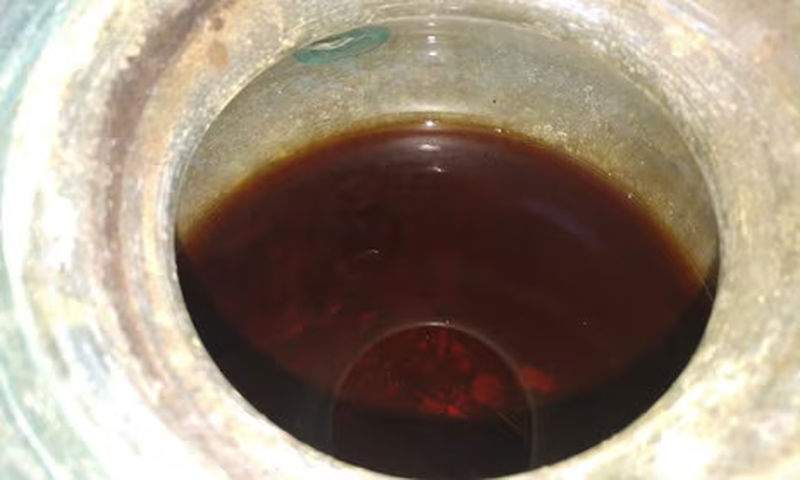The oldest wine in a liquid state that has ever been found has been discovered in Spain : the discovery bears the signature of archaeologists from theUniversity of Cordova, and the wine, from the first century AD, was found in a Roman-era tomb discovered in 2019 in Carmona, a city of about 28,000 inhabitants in Andalusia. The wine was found inside an urn buried as part of a funerary rite, and which also contained human remains. This liquid, which has acquired a reddish hue over time, has been preserved since the first century AD. C., and a team from the Department of Organic Chemistry at the University of Córdoba, led by Professor José Rafael Ruiz Arrebola, in collaboration with the Municipality of Carmona, has identified it, precisely, as the oldest wine discovered to date: the new acquisition takes away the primacy of the bottle of “wine from Speyer” discovered in 1867, dated to the 4th century A.D, and preserved in the Palatinate Historical Museum (Germany).
The challenge, the University of Cordova makes known in a note, was to verify the researchers’ suspicions, namely that this reddish liquid was wine, or more precisely that at another point in its history it was wine because it had already lost many of its essential characteristics. In order to be able to resolve this question, the archaeologists resorted to a series of chemical analyses, which were carried out at the University’s Central Research Support Service (SCAI) and published in the Journal of Archaeological Science: Reports. They studied the pH, the absence of organic matter, mineral salts, the presence of certain chemical compounds that could be related to the urn glass or the bones of the deceased, or their comparison with the current wines of Montilla-Moriles, Jerez or Sanlucar. Through this they obtained the first indications that the liquid was wine.
The key to wine identification came from polyphenols, biomarkers present in all wines. Using a technique that can identify these compounds in very low amounts, the team found seven specific polyphenols that are also present in modern Montilla-Moriles, Jerez or Sanlúcar wines. The absence of one specific polyphenol, syringic acid, served to identify the wine as white. Despite this, and that this type of wine agrees with bibliographic, archaeological, and iconographic sources, the team clarifies that the fact that this acid is not present could be due to degradation due to the passage of time.
“At first we were very surprised that liquid was preserved in one of the funerary urns,” explains Carmona Municipal Archaeologist Juan Manuel Román. The preservation conditions of the tomb, which has remained intact and well sealed for two thousand years, are what allowed the wine to maintain its natural state and to rule out the possibility that the liquid was lost through, for example, flooding, leaks inside the chamber or condensation processes
What has been more difficult to determine is the origin of the wine, as there is no sample from the same era to make a comparison. Nevertheless, the mineral salts present in the liquid from the tomb correspond to the white wines currently produced in the territory that belonged to the ancient province of Bética, particularly those from Montilla-Moriles.


The fact that wine covered the skeletal remains of a man is no accident. Women in ancient Rome were long forbidden to taste wine, as it was considered a man’s drink. And the two glass urns in the tomb of Carmona are an example of the gendered division of Roman society and funerary rituals. If a man’s bones were immersed in wine along with a gold ring and other worked bone remains from the burial bed in which he was cremated, the urn containing a woman’s remains contained not a single drop of wine, but three pieces of amber jewelry, a bottle of patchouli-scented perfume, and remnants of textiles whose early analysis seems to indicate that they were made of silk.
The wine, as well as the rings, perfume and other items were part of a funerary outfit that would accompany the deceased on their journey to the afterlife. In ancient Rome, as in other societies, death had special significance and people wished to be remembered. This tomb, which was actually a circular mausoleum that probably housed a wealthy family, was located next to the important road that connected the cities of Carmo and Hispalis (Seville), and marked with a tower (now gone) to facilitate that purpose.
 |
| Discovered in Spain the oldest wine known to date: it is a white wine from the 1st century AD. |
Warning: the translation into English of the original Italian article was created using automatic tools. We undertake to review all articles, but we do not guarantee the total absence of inaccuracies in the translation due to the program. You can find the original by clicking on the ITA button. If you find any mistake,please contact us.